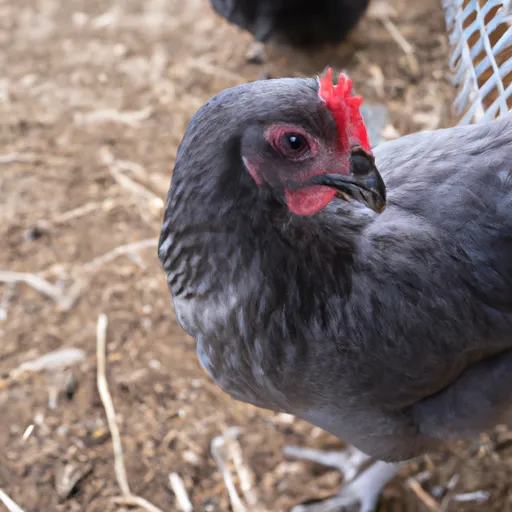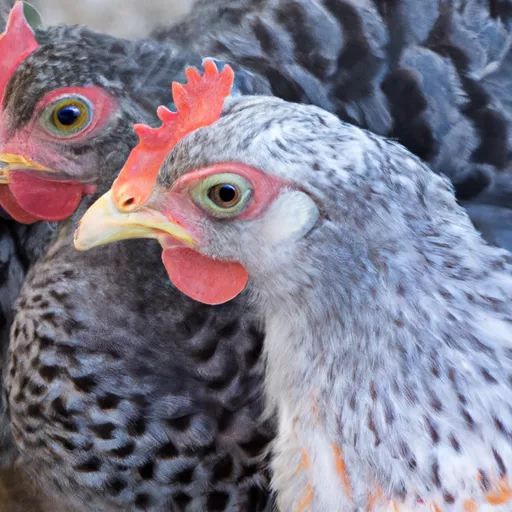What Color Eggs do Lavender Orpingtons Lay?
Have you ever wondered what color eggs lavender Orpingtons lay?
These beautiful chickens are known for their striking lavender plumage, but their egg color is equally fascinating. Contrary to what you might expect, lavender Orpingtons actually lay light brown or tinted eggs.
This unexpected contrast between their exquisite lavender feathers and the earthy tones of their eggs adds to the allure of these popular backyard chickens.

As you delve into the world of lavender Orpingtons, you'll discover more intriguing facts about their rarity, behavior, and characteristics that make them a worthwhile addition to any flock.
What color eggs do lavender Orpingtons lay?
The egg color of lavender Orpingtons
Lavender Orpingtons, a variety of the popular Orpington breed, are known for their beautiful lavender-colored feathers.
But what color eggs do they lay?
Despite their unique appearance, lavender Orpingtons actually lay brown eggs.
The color of the eggs can range from a light tan to a rich dark brown, similar to other Orpington varieties. So while their plumage may be lavender, their eggs are not.
Factors that influence egg color
The color of a chicken's eggs is influenced by various factors, including genetics, diet, and breed. The pigment responsible for the brown color in the eggs is called protoporphyrin.
The more protoporphyrin a hen produces, the darker the eggs will be. However, the specific genetics of lavender Orpingtons may influence the intensity of the brown color in their eggs.
Comparison with other Orpington varieties
When comparing the egg color of lavender Orpingtons with other Orpington varieties, such as:
- black
- blue
- buff
There is no significant difference.
All Orpington chickens, regardless of their feather color, typically lay brown eggs.
This similarity in egg color is due to the fact that Orpingtons share a common ancestry and have been selectively bred for their egg-laying abilities.
Variations in egg color
While lavender Orpingtons lay brown eggs, the shade of brown can vary among individual hens. Some lavender Orpingtons may lay eggs that are lighter in color, while others may lay eggs that are darker.

This variation is normal and is influenced by factors such as the hen's age, diet, and overall health. It is important to note that egg color can also change throughout a hen's laying cycle.
Importance of egg color
While the color of the eggs may not affect their flavor or nutritional value, it can still be of importance to some chicken keepers.
Egg color is often associated with freshness and can be preferred for aesthetic purposes or specific culinary needs. Brown eggs, like those laid by lavender Orpingtons, are generally well-liked and sought after due to their rich color.
The genetics behind egg color
The genetics of egg color are complex and can vary among chicken breeds. In the case of lavender Orpingtons, the lavender color gene responsible for their unique plumage does not directly affect the color of the eggs they lay.
The gene responsible for egg color is separate from the lavender gene and is influenced by other genetic factors. Breeders of lavender Orpingtons focus primarily on the lavender trait rather than egg color.
Egg color variations in different generations
When breeding lavender Orpingtons, it is important to understand that the egg color of the offspring may vary. This is because egg color is controlled by multiple genes and can be influenced by genes inherited from both parents.
While lavender Orpingtons breed true for the lavender feather color, the same cannot be said for egg color. Breeders may need to select for desired egg color traits over several generations to achieve consistent results.
Caring for lavender Orpington eggs
Caring for lavender Orpington eggs is similar to caring for eggs from other chicken breeds. It is important to handle the eggs with care to prevent cracking or damage. Store the eggs in a cool, dry place with good ventilation.
If you plan to consume the eggs, it is recommended to refrigerate them to maintain freshness. However, if you intend to hatch the eggs, they should be kept at an appropriate temperature until ready for incubation.
Hatching lavender Orpington eggs
If you have lavender Orpington eggs that you wish to hatch, there are a few key considerations. It is crucial to collect the eggs daily and store them properly in a clean, dry environment before placing them in an incubator.
The incubation period for lavender Orpington eggs is approximately 21 days. It is important to follow proper incubation procedures and monitor temperature and humidity levels to maximize the chances of a successful hatch.

Common misconceptions about lavender Orpington egg color
There are some common misconceptions regarding the egg color of lavender Orpingtons. Some people mistakenly believe that lavender Orpingtons lay lavender or blue eggs due to their feather color.
However, as mentioned earlier, lavender Orpingtons, like other Orpington varieties, lay brown eggs. It is also worth noting that the color of the eggs laid by Orpington chickens is not influenced by their feather color but rather by genetic and environmental factors.
